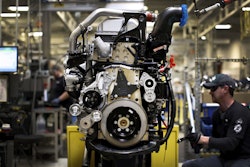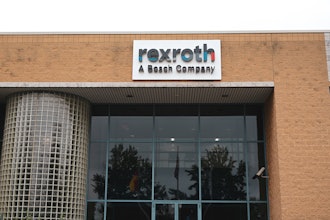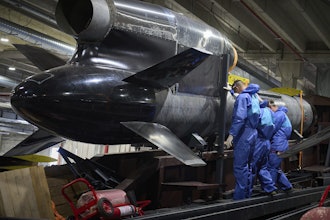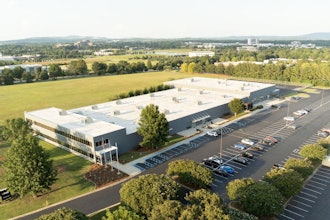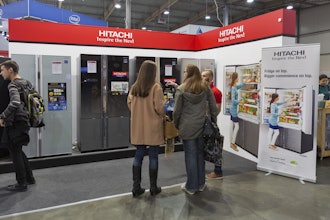Innovation is the foundation for any successful food and beverage manufacturing company.
New products help attract new customers as consumers become tired of the same products and market trends change. Additionally, leading food companies are looking to be innovative with their existing products. This means more than line extensions, but striving to continually drive cost out of a product without sacrificing quality. This is done through a number of initiatives, mainly reformulation with lower cost ingredients, or refining the manufacturing process so as to drive down the costs (less down time, lower energy utilization, etc.). Revamping the supply chain so as to lower transportation and storage costs is also a common initiative.
Companies depend on various software solutions such as enterprise resource planning (ERP), product lifecycle management (PLM) and supply chain management (SCM) to help deliver on all these efficiency drivers. Ironically, while companies are depending on software to drive efficiency, very few are making sure that the software itself is the most efficient as possible. Is the solution actually designed with the needs of the food & beverage manufacturing industry in mind? Can it really model the nuances from shelf life to seasonality? Is it really being deployed in the most modern means possible, the cloud?
While cloud deployments are gaining momentum throughout manufacturing, many food and beverage manufacturers are just beginning to consider the benefits that can be derived from the software-as-a-service (SaaS) model rather than relying solely on-premise implementations. Many are still taking a wait-and-see attitude and treating the cloud as something they will consider the next time they need a new solution. They aren’t looking at cloud as something to proactively implement right now. This is equivalent to the R&D department not considering a new formula until they were no longer able to purchase a current ingredient. At that point in time, the market will have already passed them by.
Moving to the cloud presents new challenges as well as opportunities. Companies that are new to this type of deployment model may need to research it thoroughly to ensure that it is the right fit. Selecting the proper vendor or partner to help evaluate both a cloud as well as on-premise solution is critical for adequately comparing your options and is often the most important factor for overall return on investment. Whether evaluating a new solution or considering transitioning a current application to the cloud, manufacturers should consider the following:
- Does the solution provide the industry-specific functionality needed?
Companies should search for a system that delivers flexible, industry-specific functionality as customizations will kill much of the benefit of a cloud deployment. This includes tools to solve challenges such as short shelf life, attributes, yield and catch-weight. A solution that enables some personalization for your specific business is important but not if it results in the need for customized source code.
- Is it a unified solution?
Food manufacturers cannot maximize the benefits of cloud implementation if they have to implement numerous siloed applications just to manage all aspects of their business. Companies should select an option that provides all the functionality that is critical to their specific businesses (e.g., forecasting, demand planning, tracking and traceability, recipe management, etc.) within a unified suite. A single solution in the cloud will create enterprise-wide visibility and help to streamline operations for greater efficiency.
- Is it secure?
Security is often the number one concern for companies considering moving to the cloud. Manufacturers should confirm that the solution follows industry best practices and protocol to protect data from compromise. Checking to see if vendors have a dedicated business unit tasked with the implementation and deployment of cloud technology is often a reliable way to confirm that security is a priority and that consultants have extensive experience with SaaS-based implementations.
- Is it scalable and flexible?
The ability of the cloud solution to grow as the business grows needs to be evaluated. Beyond the obvious need to add additional users as a business grows, the solution needs to be capable of supporting additional functionality as well. For example, if you are just a domestic manufacturer today, can the solution support you if you begin to grow internationally? Can it support multiple currencies? A cloud solution needs to be something that a food company can embrace now as well as 10 years from now.
When companies move critical applications to the cloud, they not only improve their ROI, but they potentially increase their overall efficiency if they focus on utilizing solutions with industry-specific functionality. Cloud deployment offers more flexible IT options for users, supporting a global company and allowing companies to continue to grow and capitalize on the latest applications without investing in additional infrastructure or staff. The question is no longer why invest in the cloud, but how to invest to get the most for your organization to stay ahead of competitors and take advantage of the next generation of technology innovations.
The food and beverage industry remains a highly competitive and fast-paced environment. Manufacturers must continue to invest in updated technology and processes or they will eventually fall behind. Deploying critical business applications in the cloud could be a viable solution for manufacturers to increase profitability and maintain growth, while still being cautious of underlying costs.




